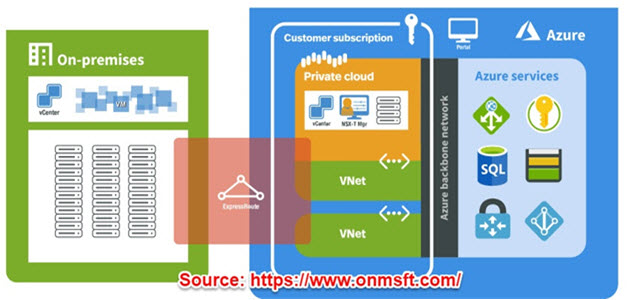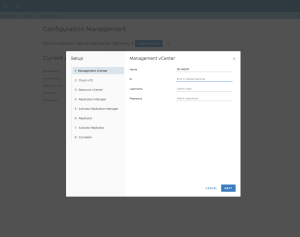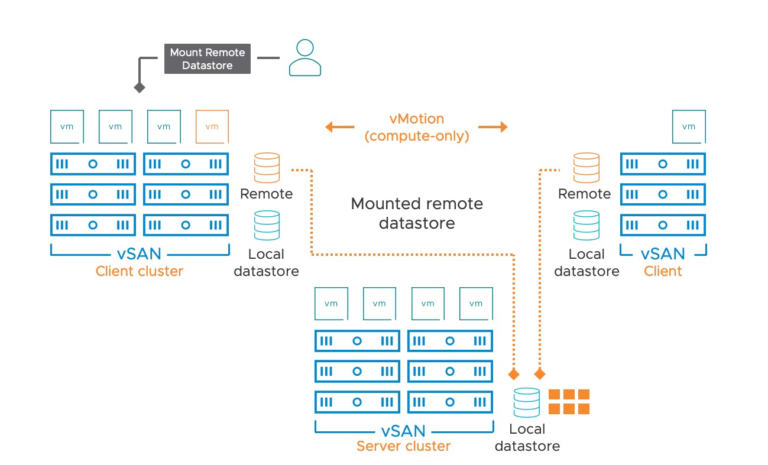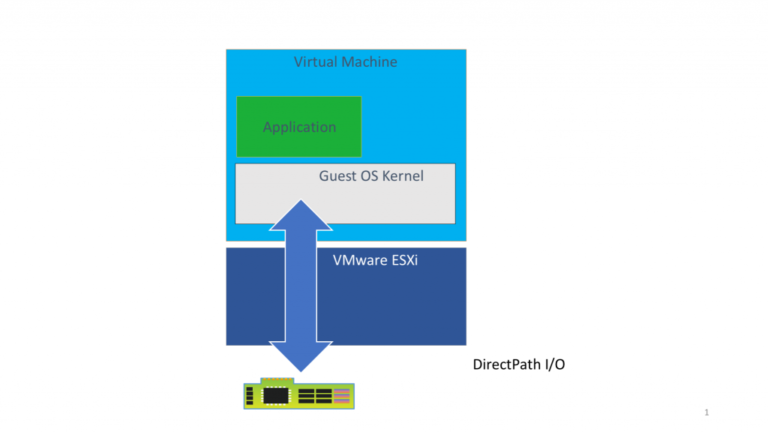In April, 2019 , Microsoft announced the Lifecycle FAQ – Extended Security Updates, offering Customers who are unwilling or unable to upgrade to newer versions of some of its products an opportunity to continue to receive Security Updates and Technical Support for these otherwise “obsolete” Products. Although Customers have to purchase the “Extended Security Updates” (ESU) separately, Microsoft made it available at no additional cost for Customers who have purchased the Azure Hybrid Benefit.

The global ubiquity of the VMware vSphere-based virtualization and cloud computing solutions in the Enterprise have continued to be the most singular validating testament to the trust and confidence these Solutions have engendered in the minds of IT Practitioners, Administrators and Architects over the past decades. The fact that these Solutions continue to be superior to competing offerings have made those competitions so less compelling to IT Decision Makers worldwide, even when enticed with what appears (on face value) to be less financially costly options. The VMware vSphere infrastructure remains inarguably the desired target platform for virtualizing most major Mission Critical Applications. For example, the Microsoft SQL Server application is the single most virtualized application on VMware vSphere – according to the Analysts, there are more Microsoft SQL Server workload instances on vSphere than there are on any other platform, including on bare metal Servers.
Microsoft has made major strides in aggressively positioning its Public Cloud solution (Azure) in the enterprise in recent years. The investments in these efforts have continued to yield positive results for Microsoft, allowing Azure to gain increasingly larger foothold in the global Public Cloud space. This success cannot be attributed solely (or even primarily) to a sudden, organic embrace by the enterprises and Practitioners. The intentionality of Microsoft in overtly (and consciously) steering its customers away from the on-premises versions of its flagship products into Azure-based cloud infrastructure is a contributor to Azure’s growth. By making Azure instances of these products comparatively attractive (for example, by releasing new product features and capabilities first into the Azure-based and hosted versions, and through various recent changes in its support and pricing policies), Microsoft openly broadcasts its desired end-state for where it expects Customers to gravitate to – The Cloud.
Although most Enterprises have made significant investments in operating their own Private (On-Premises) virtualization and cloud infrastructure, it is universally acknowledged that the flexibility afforded by the Public Cloud (among other attributes) makes the weighty issue of (at least) a partial embrace of that infrastructure unavoidable in the long term. Many enterprises have moved a significant portion of their infrastructure from their physical datacenters into one or more of the various Public Cloud environments, and the Experts are predicting an upsurge in this trend in the coming years. While VMware has its own Public Cloud offerings, the aforementioned ubiquity and prevalence informed VMware’s strategic alliances and partnership with almost all the major Public Cloud Solution Providers through which the VMware vSphere Platform has become a staple Solution offering in all but a few of these infrastructures.

AVS is a Azure Public Cloud Service offering, built on top of bare metal servers running the VMware vSphere hypervisor and management suite, inside the Microsoft Azure Cloud infrastructure. Because the underlying technologies are exactly the same as what the Customer is already familiar and comfortable with in its physical, on-premises incarnation, AVS minimizes the learning curves, costs and administrative efforts required for an enterprise to transition all or a significant part of their existing virtualized workloads into the Public Cloud space. AVS is a solution validated, offered, sold, maintained and supported by Microsoft. This not only provides a much-needed level of assurance and peace of mind to the Customers; it also helps assuage the concerns about the fate of sunk cost and investments in Customer’s current infrastructure while clarifying and streamlining the Cloud adoption and infrastructure modernization journey for them.
However large the enterprise, cost minimization is invariably of considerable interest. Even when distinctly superior and compelling, the Total Cost of Ownership of a given Solution must be sufficiently affordable as to continue to command acceptance and adoption by Customers. On the other end of the spectrum, smart vendors understand that enterprises look for much more than retail costs when choosing between or among competing Solutions. When a Customer is given the option to combine the best of both option (affordability and functionalities), everyone wins.
Since a significant number of Customers running old versions of these products have virtualized them on VMware vSphere and are not necessarily Microsoft’s Azure Customers nor ready to move their workloads into Azure, this presents a challenge for everyone concerned. For the Customers who aren’t ready to upgrade their Microsoft Products to newer, mainstream and supported version, or move their vSphere-hosted Mission Critical Applications to another platform, the added cost of ESU became a great concern.

Enter, the Microsoft Azure VMware Solution.
Because AVS is covered under the Azure Hybrid Benefit, VMware vSphere Customers looking to take advantage of the Extended Security Updates offer are able to do so by moving some or all of these workloads to AVS without incurring the additional cost that would have been otherwise required. And without the added complexities of refactoring, re-provisioning or re-learning new administrative and infrastructure management tasks. Because the Management pane of AVS is the familiar and ubiquitous VMware vCenter UI, AVS affords customers the opportunity and ability to embrace the Public Cloud they desire, at a price-point much more affordable than the alternative and to so do with the least possible disruption and level of efforts. With AVS and Azure Hybrid Benefit, Enterprises will be able to meet the cost-minimization objectives in their overall posture and continue to enjoy the benefits of the superior virtualization and cloud computing solutions they have long become accustomed to over the years.
Who says that one can’t eat one’s cake and still have it? Not me.






